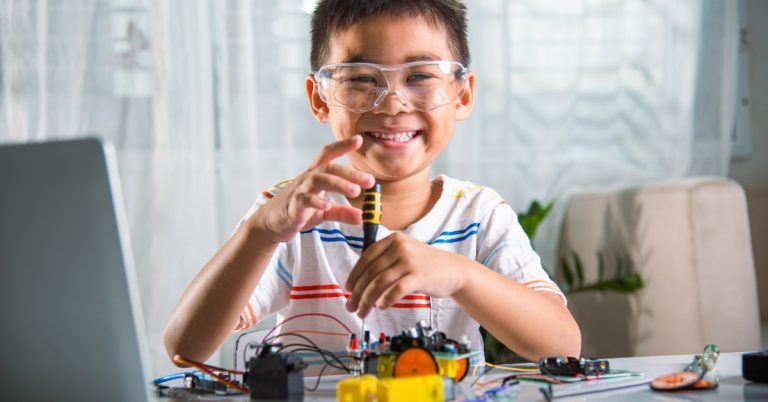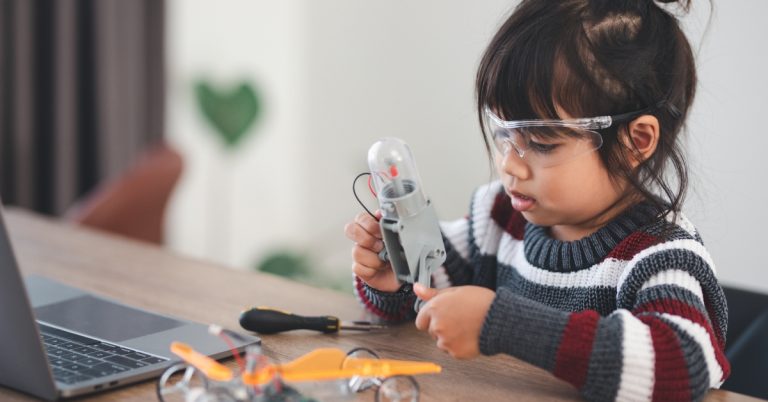Curiosity is a natural part of childhood. It fuels exploration, sparks creativity, and enhances learning. As parents and guardians, we can play a vital role in fostering this inquisitive spirit. The good news is that cultivating curiosity doesn’t have to be a chore; it can be incredibly fun! Here are ten engaging family learning activities designed to inspire curiosity and create lasting memories together.
1. Nature Scavenger Hunt
Take a trip to a local park, nature reserve, or even your backyard, armed with a scavenger hunt list. Create a list of items for everyone to find – a leaf, a specific type of flower, or a unique rock. Encourage kids to ask questions about their discoveries and share interesting facts about each item. This activity promotes observation skills and a deeper appreciation for nature.
2. Home Science Experiments
Transform your kitchen into a science lab! Simple experiments like making a volcano with baking soda and vinegar, growing crystals with sugar or salt, or even investigating how plants drink water with colored dye can spark excitement. Use these hands-on activities to explain the science behind why they work, encouraging questions and exploration.
3. Cultural Cooking Night
Pick a country and prepare a meal together that reflects its culinary traditions. Research the country’s culture, geography, and recipes ahead of time, then cook together! After your meal, discuss what you learned about that country, its customs, and the significance of its cuisine. This activity nurtures cultural curiosity and encourages appreciation for diversity.
4. Book Club for Kids
Start a family book club where everyone reads the same book suitable for all ages. Set aside a specific time to discuss the story, share thoughts, and ask questions. Encourage even your youngest readers to express their opinions. This can foster a love for literature while developing critical thinking and comprehension skills.
5. DIY Art from Nature
Gather leaves, flowers, twigs, and stones to create art projects. For example, you can make leaf rubbings, flower bookmarks, or rock animals. Use this opportunity to discuss the various materials you’re using and their place in the ecosystem. This activity combines creativity with nature exploration, reinforcing an appreciation for the environment.
6. Family History Exploration
Engage children with their roots by looking through family albums, telling stories from your childhood, or interviewing relatives about their past. You could create a family tree together to outline your lineage. This activity fosters curiosity about personal history and can lead to meaningful conversations about identity and heritage.
7. Interactive Learning Apps and Games
Utilize technology by exploring engaging educational apps and games suitable for all ages. Collaborate as a family to solve puzzles, tackle quizzes, or participate in virtual museum tours. Choose platforms that focus on history, science, or art to cultivate knowledge through interactive means, but be sure to complement screen time with discussions about what you learned.
8. Themed Dress-Up Day
Organize a themed dress-up day based on a particular era, profession, or cultural celebration. Research together about how people dressed, what they did, and what life was like during that time or in that culture. After dressing up, participate in activities that were popular in that time period, such as games or crafts, which link fashion with history.
9. Start a Garden Together
Gardening is a fantastic way to learn about biology, ecosystems, and responsibility. Select a variety of seeds or plants, research how to care for them, and observe their growth over time. Along the way, discuss topics such as photosynthesis, pollination, and the importance of plants to our environment. This hands-on activity nurtures patience and a sense of accomplishment.
10. Science and History Field Trips
Plan family outings that combine fun with learning. Visit a science center, planetarium, historical site, or local museum. After the visit, hold a discussion about what everyone enjoyed most and what they learned. Encourage your family members to share their favorite exhibits or facts discovered that day, enhancing retention and interest.
Conclusion
Curiosity is a pathway to lifelong learning. By engaging in these fun family activities, you can help cultivate an inquisitive mindset in your children and strengthen family bonds. Each experience encourages questions, critical thinking, and a sense of discovery. So gather your family, get creative, and embark on your journey of curiosity together!



